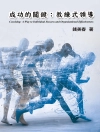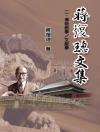The success of Brazil in the large-scale production and use of fuel ethanol has been widely discussed and analyzed by other countries interested in adopting policies designed to encourage the use of biofuels. Within this context, certain questions arise: Could the Brazilian experience be replicated in other countries? What were the conditions that enabled the creation of the Brazilian Proálcool (National Ethanol Program and what lessons can be learned? To examine these issues, it is important to understand the functioning of the key, interconnected markets (those for sugarcane, sugar and ethanol), which, from their inception, were the objects of extensive government intervention until 1999. Two main conditions enabled the creation of Proálcool: robust production of sugarcane and sugar (tightly regulated by the government, which applied the numerous regulations then in place); and the military regime that was in place at the time, whose decision-making and enforcement powers were quite broad, facilitating the carrying out of the necessary actions, as well as making it easier to coordinate the activities of the various stakeholders and sectors involved. This book increases understanding of the functioning of the sugarcane supply chain in Brazil, not only during the phase of government intervention but also in recent years (in the free-market environment). The lessons, positive and negative, gleaned from the Brazilian experience can contribute to reflection on and the development of alternative modalities of biofuel production in other countries, making the book of interest to scholars and policy-makers concerned with biofuel and renewable resources as well as economic development.
Table of Content
Production of Ethanol from Sugarcane in Brazil.- From State Intervention to a Free Market.- Introduction.- PART 1.- STATE INTERVENTION IN THE SUGARCANE ETHANOL INDUSTRY IN BRAZIL.- State intervention in the chain of production of ethanol from sugarcane in Brazil: its forms and effects on the development of the sector between the 1930s and 1980s.- PART II.- THE GOVERNMENT DISTANCES ITSELF IN THE 1990S: THE BREAK AND THE LEARNING CURVE.- The 1990s: deregulation of the sector.- Organizational changes within the public sphere.- Organizational changes within the private sphere.- Changes related to production and marketing controls on sugar: fixed production levels, crop plans, exports, and the differential collection of the Industrialized Products Tax93.- The marketing of sugarcane and ethanol: changes resulting from deregulation.- Activities of the Inter-Ministerial Council on Sugar and Ethanol during the deregulation process.- Interested parties come to the defense of the sugarcane ethanol industry.- The process of deregulating the sugarcane ethanol industry.- Political determinants of the decision-making processes: the players, their power resources, and the redefinition of their roles in the new institutional environment.- The free market: the profound changes and the new agenda.












